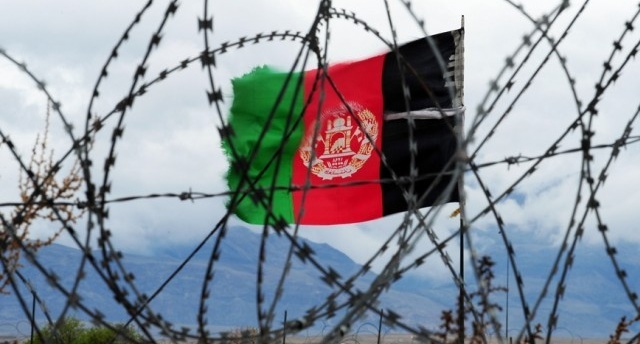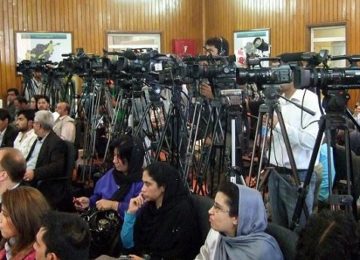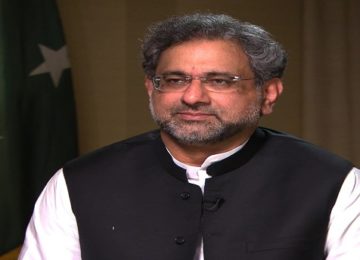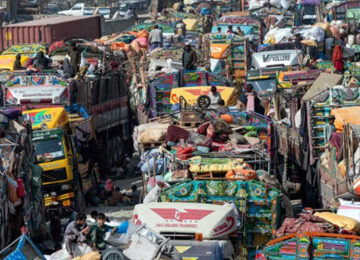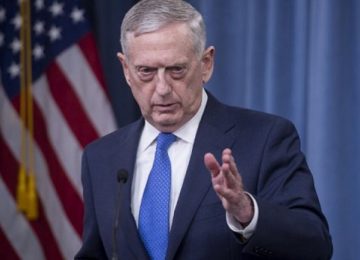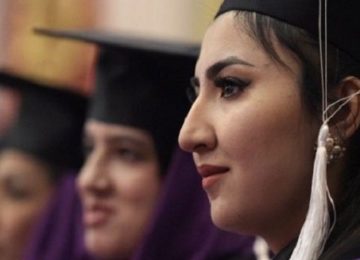A new short book-length report, “Incremental peace in Afghanistan” looks at what is needed to end the Afghan conflict. It explores the many drivers towards the war continuing – external backing for both sides, the war economy and basic persisting disputes about power-sharing – but also details what could drive a peace process – the many concerns shared by Afghans, the view of the war as pointless and, they say, international interest in achieving peace. The new report has an interesting mix of contributors – female, male, Afghan and international, civilians, Taleban, activists, politicians, academics and military. In this review, AAN Co-Director Kate Clark finds the report is timely and full of fresh voices and ideas.
Talk of peace in Afghanistan is in the air, at least more than it was a year ago. 2018 has seen the Taleban publishing a “Letter to the American people” on 14 February which appeared to propose talks with the US (1) and on 28 February President Ashraf Ghani offered peace talks to the Taleban without pre-conditions (read AAN’s take on that here). Positive noises came from the NATO’s Foreign Ministers meeting on 27 April (2) and from Resolute Support and United States military commander in Afghanistan, General John Nicholson on 30 May. As Radio Free Europe reported, he said some Taleban are talking, with a lot of “diplomatic activity and dialogue… occurring off the stage, and… at multiple levels,” with “mid-level, senior-level Taliban leaders engaging with Afghans” (full text of his press briefing here).
This year as well, a new, non-aligned, (very) embryonic peace movement has emerged after civilians in Helmand, fed up with being killed by both sides, called for a ceasefire; groups in more than half of Afghanistan’s provinces have since come together to echo these demands (see AAN reporting here). Many Afghans are also looking admiringly at the mass demonstrations known as the ‘Pashtun Long March’ that have been held across the border in the Federally Administered Tribal Areas (FATA). Pashtun civilians there are demanding civil rights and an end to insurgency and counter-insurgency being played out by Pakistani Taleban and Islamabad in their lands (see media reporting here and here).
As the Afghan conflict enters its fortieth year, there is actually quite a lot of agreement about it – virtually everyone agrees neither side can win and that the conflict is causing atrocious damage to Afghanistan and its people (ten thousand civilians killed and injured last year, to mention just one of the nasty statistics of this war – see more here). Yet even those who want to prioritise peace-making are often left stumped with many unanswered questions: what to do, who should speak to whom, what would peace ‘mean’ and how can we help (the author has heard the last question raised in many military and civilian international circles in recent weeks).
A timely publication
The publication by Conciliation Resources of “Incremental Peace in Afghanistan” is therefore very timely. (3) It is also very good, providing context, information and quite a lot of fresh thinking. This is how the editors lay out what they feel they have done with this publication:
[We] identify the need for a radical change in approach to move beyond peace rhetoric in Afghanistan through a progressive, step-by-step process towards political settlement, which builds stability, confidence and legitimacy over time. This would pursue two phased objectives: first, short-term – to reduce violence which inevitably involves a central role for the conflict parties, principally the Taliban and the Afghan government; and second, long-term – to achieve a more broadly inclusive social contract representative of all Afghans which is only achievable with involvement and ultimately endorsement across Afghan society.
There is a good range of contributors, including local perspectives from civilians in four provinces and from senior Taleban commanders and leaders in four areas of the country and from Quetta, analyses from academics like Barnett Rubin, Muhammad Nazif Shahrani and Thomas Barfield, the thoughts of senior politicians/military leaders including Gulbuddin Hekmatyar, Yunus Qanuni, Habiba Sarabi and retired US general Douglas Lute and statements from High Peace Council chair Abdul Karim Khalili and spokesman for the Taleban’s political office in Qatar Muhammad Suhail Shahin.
The report is split into three parts: historical lessons from the conflict and from earlier attempts at peace-making, priorities for peace initiatives, and options for institutional change. The lessons-learned section aims at understanding “how departures from established, violent political paths might be possible” and includes historical analyses of the Afghan state, critiques of the Bonn agreement and of Dr Najib’s late PDPA era attempts at ‘national reconciliation’ and a setting out of how the Taleban view the post-2001 era.
The final section of the report looks at the possibilities for institutional changes and features the thoughts of Hekmatyar and Qanuni and the views of Afghans living in rural Balkh, Nangrahar, Herat and Ghazni on elections, peace and reconciliation. It was thesecond section, ‘peace initiatives’, however, which contained some particularly interesting insights.
Fleshing out some detail when looking at initiatives for peace
Sippi Azarbaijani-Moghaddam manages to get away from focusing on women’s representation as mainly a tick in the box exercise to actually asking what would women’s participation mean for the peace process and how a range of Afghan women could be represented. For example, she writes:
There is also often an assertion that gains from a peace process absent of women would not be sustainable. But it is not clear how women’s participation would guarantee sustainability if women participants are in any case disempowered and must be granted space and permission to engage in the first place. This comes across as fearful and anxious rather than a proactive approach to entering the peace marketplace and seeing what is on offer. On the other hand, proactive approaches to peacebuilding on a small scale and at a local level have been fruitful, as a woman activist working with local shuras to reduce civilian casualties recently told me.
Perhaps the most surprising chapter is when of the publication’s editors, Anna Larson, hears from senior Taleban commanders and leaders from five ‘caucuses’ in the north, west/north-west, south-east, south and Quetta. “All groups currently self-identify as Taliban and belong to the central Taliban movement,” she writes, “but some have expressed the desire to become autonomous from it.” The conversations took place “in person over the course of several days in spring 2018 at an undisclosed location outside of Afghanistan, to which the five caucuses concerned had travelled in order to begin talks with a group of high-level actors representing several countries, including Afghanistan and the United States, about the de-escalation of violence and potential for reconciliation with the Afghan government.” One of the positions common to all five caucuses, says Larson, is that, “Above all, it is critical to end the needless killing of Afghans. We want to work towards the establishment of peace in our country.”
There is a lot that is interesting and unexpected in what these particular Taleban say. Among other things, those in the north complain about their marginalisation by “Kandaharis and Zadranis,” (4) a reference to the predominance of Kandaharis in the leadership and the clout of the Haqqanis. And, one of the west/north-westerners complains about the lack of local Pashtun political representation on the Provincial Council and in parliament – he also compares government help to his area, unfavourably, with the previous efforts of NATO’s Provincial Reconstruction Teams. A “senior member of an opposition group that has links to the Taliban” in the south-east insists they started fighting the ‘US invasion’ only in self-defence:
We are not the followers of fighting. We want to continue towards peace – we are not against democracy, it is not against Islam. We have three clinics and we have female doctors too. No one can control local security as well as we can. There is a dam being built in one of our districts and we have 60 people providing security for that project. No engineer has died or been kidnapped. We are supporting them. Police are in their jobs, we are supporting them also.
…No one will find anything in our history that connects us to suicide bombers. In our mountain areas there are foreign fighters – Chechen, Punjabi, etc – and we try to stop them as far as possible but we cannot do this all the time. We do not allow them to come to the villages or the mosques. Foreign fighters have a lot of money and weapons but still we try to stop them. We have no funds from opium. The Peshawar Shura is supporting the Haqqanis but it is not supporting us. This is our story.
This chapter shows that there are different voices within the Taleban. Those featured in the report may be critical of their own leadership, but, it should be noted, they are even more scathing about the Kabul government, complaining about corruption, the “criminals in power” and government forces who they allege sell their weapons to the insurgents and do not come to the aid of their comrades. These Taleban are not interested in surrender or coming over to Kabul, but they are interested in ending the conflict. It is also interesting that they talk about jobs, representation, power in Kabul and the districts, and the influence of Pakistan – all very normal concerns for Afghans generally.
Even though the Taleban controls or influences much of Afghanistan (how much is argued over, see here) for the discussion), the voices of individual fighters and commanders are rarely heard. Not all of this chapter is easy reading, but it is a welcome contribution, adding nuance, detail, complexity and some internal contradictions into what some Taleban within the movement think.
Also in the section on peace initiatives, Julius Cavendish writes about three local peace ‘accords’ that were made between Taleban and communities in Helmand province in 2006 and 2010 and which were successful but which ultimately failed. Although they had the support of some international players, they also suffered from a lacklustre response from provincial and central government and hostility by senior US commanders (described in this 2014 dispatch for AAN).
The accords show, Cavendish writes, that “even in the midst of very violent conflict, peace is possible in Afghanistan – and that local populations are prepared to take calculated risks to make it happen.” He believes the way the accords worked – and ultimately failed – also point to “several simple yet critical lessons.” They are: recognise that good brokers can play essential roles in peace mediation but have ambiguous identities; empower local communities; honour commitments punctually; be realistic about central government support; recognise that local deals can nonetheless pave the way for a national settlement and; coordinate military and political activities. On that last point, Cavendish writes:
This fundamental disconnect between Afghan and British officials pursuing a political deal on the one hand, and US warfighters on the other, was also evident in the contrasting narratives with which each described the second Sangin accord. Senior US commanders framed the deal as a surrender by Taliban-aligned fighters to the coalition rather than a compromise with honour – a depiction that many [Upper Sangin Valley] found both insulting and inaccurate. At the same time, US commanders insisted on ‘testing the deal’, sometimes by contravening its terms….
Where political and military action was coordinated, however, as it had been in the build-up to the first Sangin accord, the results were effective. Most notably, the exercise of ‘heroic restraint’ by British forces through the first half of 2010 was viewed positively by local communities, and contrasted sharply with abusive behaviour by out-of-area Taliban personnel, whose actions bred resentment and eventually led them to be perceived as occupiers – precisely as the district governor and his advisors intended.
Michael Semple, now a professor at Queen’s University, Belfast, but previously with both the United Nations and European Union mission in Afghanistan looks at what will be needed to foster a peaceful Afghanistan that is stable in the long-run. “A single, comprehensive peace agreement to agree a new social contract is unlikely to be achievable,” he warns. “A more viable alternative model would involve an incremental, phased approach that builds confidence over time.” He posits ten (rather daunting) priorities that need to be discussed and dealt with to create the sort of new ‘social contract’ which would foster peace and stability. They include “the preservation of national unity and Afghan identity; international military forces; security, respect and basic needs for combatants and people affected by conflict; state-citizen relations and the role and privileges of elites.” (5)
Dialogue and reform is needed, but cannot begin, he insists, without first an end to the violence:
The best way to shape the conditions conducive to such a sustained process of dialogue and reform would be to agree a pause in the fighting early on. Conflict parties wishing to participate in such a sustained peace process would need first to sign up to the suspension of violence.
Conclusion: drivers towards peace… and war
This new publication makes plain the very real factors driving the horrible persistence of war in Afghanistan:
… a well-established war economy, which fuels and funds violence. Both main parties to the war – the Taliban and the Afghan government – remain determined to fight on and have secured sufficient external backing to do so. Underlying the violence are persistent political disputes over how power is shared and how future reforms are configured.
Yet it also highlights how much Afghans of all stripes have in common, with concerns shared and even some of their narratives overlapping. There is a communal weariness with the war and a collective view that the conflict is pointless – what actuallyis it over? Also positive in the drive for an end to the war, say the authors, is that there is international interest in achieving peace.
The editors recognise both the many real difficulties and dangers and the many positive pro-peace forces. For them, after eighteen months of research on the topic, unless there is to be anindefinite continuation of violent conflict, an incremental progress towards sustainable peace is needed:
The cessation of violence would represent the single most important action to build confidence and help launch dialogue on core substantive issues. Such an approach recognises the importance of rebuilding relationships between the parties in expanding the possibility of agreement. Rather than involving a single text such as the 2001 Bonn Accords, an incremental peace in Afghanistan might consist of a series of agreements sequenced from easy to hard, with agreed reforms and confidence-building connecting the parallel short- and long-term tracks over a period of years.
As Afghanistan enters its fortieth year of conflict, this reviewer, at least, was happy to be reading something fresh and practical about how to achieve peace.
(1) Part of the Taleban’s letter read as follows:
The Islamic Emirate had asked America from the very beginning to solve her issues with the Islamic Emirate through talk and dialogue. The use of force has adverse consequences, and you might have now discerned the bitter consequences of American aggression against Afghanistan. If the policy of using force is exercised for a hundred more years and a hundred new strategies are adopted, the outcome of all of these will be the same as you have observed over the last six months following the initiation of Trump’s new strategy.
According we still believe that it is not too late for the American people to understand that the Islamic Emirate – as representative of its people – can solve its problems with every side through healthy politics and dialogue. Needless use of force only complicates the issues by creating new dimensions which gradually move out of the realm of control. The Islamic Emirate is a regional power with deep roots which cannot be subdued by sheer force. The chances of dialogue however are not exhausted. The American people must understand that the Islamic Emirate understands its responsibility and can play a constructive role in finding a peaceful solution for issues but this can never mean that we are exhausted or our will has been sapped. It is our policy that logic should be given a chance before the use of force. Whatever can be achieved by logic, should not be relinquished due to the use of force. It is the moral obligation of the Islamic Emirate of Afghanistan to inform you, the American masses, about these realities.
(2) The Foreign Ministers’ statement included the following (emphasis added of a phrase which seems to point to the role of NATO forces in the country):
NATO Allies are united in their support for this proposal of an Afghan-led and Afghan-owned process. We will respect and support a negotiated political settlement led by the Afghan Government which ends violence, cuts ties to terrorism and protects the human rights of all Afghan citizens. We also support the Afghan Government’s intention to address all contested issues between the parties, including those relating to the future role of the international community in Afghanistan.
(3) Conciliation Resources (www.c-r.org.) describes itself as “an independent international organisation working with people in conflict to prevent violence, resolve conflicts and promote peaceful societies.” It publishes reports, roughly one a year, in a series titled “Accord”. These are aimed at informing and strengthening “peace processes by documenting and analysing the practical lessons and innovations of peacebuilding.”
(4) This should be ‘Zadran’, used for both single and plural members of the tribe
(5) Semple’s other priority areas are: inclusive security reform; property, economic rights and the illicit economy; structure of government and consolidation of electoral democracy; promoting Islam and religious freedom; judiciary and legal system; and ethnicity, social inclusion and equality of opportunity.
By Special Arrangement with AAN. Original link.
Disclaimer: Views expressed on this blog are not necessarily endorsed or supported by the Center for Research and Security Studies, Islamabad.



